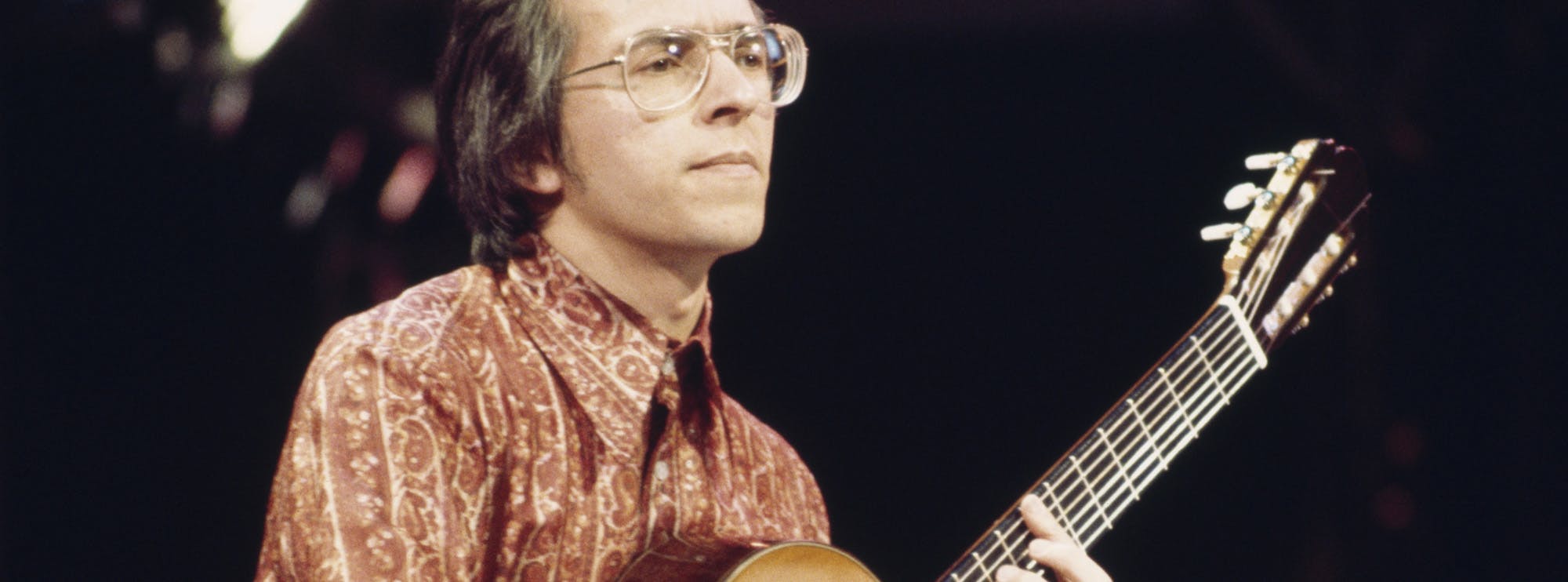"Vital Signs" by Rush - Guitar Lesson Overview
"Vital Signs," the closing track of Rush’s landmark album Moving Pictures, is a distinctive blend of progressive rock, reggae, and new wave influences. This track showcases Alex Lifeson’s dynamic guitar work, combining precise rhythms, atmospheric textures, and clever use of arpeggios, power chords, palm muting, and barre chords. In this note-for-note guitar lesson, you'll not only learn to play the song in its entirety, but you’ll also develop key techniques that are crucial for playing intricate rock pieces like "Vital Signs." This lesson is taught by Sam Bell.
Key Techniques in "Vital Signs"
Power Chords
Power chords are fundamental to rock music, and in "Vital Signs," they provide the driving force behind the song’s dynamic shifts. These simple, two- or three-note chords deliver a punchy, full sound that is ideal for maintaining energy throughout the song. Power chords are easy to move around the fretboard, making them perfect for the rapid transitions found in this track’s rhythm sections.
For guitarists, mastering power chords is essential not just for playing rock but for building a foundation in rhythm guitar. In this lesson, we’ll break down how Lifeson uses power chords to anchor the song’s structure while adding momentum to the chorus sections.
Palm Muting
Palm muting is a crucial technique that adds depth and texture to "Vital Signs." Lifeson uses palm muting in the verses and during rhythmic transitions, creating a percussive, controlled tone that contrasts with the more open, ringing chords. This technique involves lightly resting the side of your picking hand on the strings near the bridge to mute them, producing a tighter, more staccato sound.
For guitarists, palm muting is an invaluable tool for controlling dynamics. It allows you to create contrast between muted and open parts, which adds excitement and texture to your playing. In "Vital Signs," palm muting is essential for achieving the syncopated, reggae-influenced rhythm that gives the song its unique groove.
Barre Chords
Barre chords play a key role in the harmonic structure of "Vital Signs." Lifeson’s use of barre chords provides harmonic richness while allowing him to seamlessly shift between different chord shapes. Barre chords involve using one finger to press down multiple strings across the fretboard, enabling you to play movable chord shapes that can be applied anywhere on the neck.
Mastering barre chords is essential for guitarists looking to expand their chord vocabulary and play more complex pieces. In this lesson, we’ll explore how Lifeson employs barre chords in "Vital Signs" to create tension and release, adding depth to the song’s harmonic landscape.
Arpeggios
Lifeson’s use of arpeggios in "Vital Signs" adds a melodic and atmospheric element to the song. Arpeggios involve playing the individual notes of a chord in sequence rather than strumming them all at once. This technique adds texture and complexity, allowing the guitar to stand out while blending seamlessly with the rhythm section.
For guitarists, learning to incorporate arpeggios into your playing is a great way to enhance your finger control and picking accuracy. In this lesson, we’ll guide you through the arpeggio sections in "Vital Signs," helping you understand how Lifeson uses them to create both rhythmic and melodic interest.
About the Guitarist: Alex Lifeson
Alex Lifeson, Rush's guitarist, is known for his versatility, technical skill, and creative use of effects. His ability to combine different genres and textures into cohesive guitar parts makes him one of the most innovative rock guitarists. In "Vital Signs," Lifeson shifts between tight, syncopated rhythms, floating arpeggios, and driving power chords, all while maintaining a fluid musicality that sets the track apart. Lifeson’s influence can be felt across various rock and progressive genres, inspiring countless guitarists with his complex but accessible style. His work in Rush is a masterclass in combining precision with emotion, and "Vital Signs" is a perfect example of this balance.
Conclusion
"Vital Signs" by Rush is a masterclass in combining rhythmic complexity with melodic inventiveness, and Alex Lifeson’s guitar work in the song showcases a range of essential techniques that are critical for any rock guitarist. In this note-for-note guitar lesson, we take you through each part of the song, focusing on Lifeson’s use of power chords, palm muting, barre chords, and arpeggios.
Whether you're a fan of Rush or simply looking to improve your guitar technique, learning to play "Vital Signs" will enhance your understanding of dynamics, rhythm, and harmonic interplay. With this lesson, you’ll not only master the song but also gain valuable skills that you can apply to countless other pieces in your repertoire. Dive into the lesson today and experience the genius of Alex Lifeson’s guitar work!
About The Tutor
Tutor Profile
Sam Bell
Sam Bell has been playing guitar from the age of 4, since then he has played many styles from Funky Blues to screaming Metal/Fusion on 8 string guitar. A member of UK tech metal band ‘Mask of Judas’, he is also currently writing his own solo instrumental album. He also...



